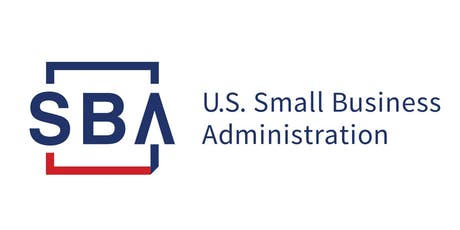
Paycheck Protection Program (PPP)
Update on PPP loans (January 12, 2021)
There have been many questions about the First and Second Draw of the Payroll Protection Program (PPP) loans. The rules refer to first round PPP Loans as “First Draw PPP Loans” and this second round as “Second Draw PPP Loans.”
- The last day to apply for and receive a PPP Loan is March 31, 2021.
- As with the First Draw PPP Loans, funds are limited. Congress has approved $284 billion in new loans. That’s less than the $349 billion first round, which, you may recall, was gone in just under two weeks. Congress then allocated an additional $320 billion. And while those funds didn’t run out, it was likely because of all of the confusion in the program. Now that forgiveness and tax rules are clearer, the money is likely to go much faster.
After speaking with a local banker, please understand the following when considering applying. The best advice would be to call your local banker ASAP to discuss your options and get in as early as you can!
- There are separate applications for First Draw and Second Draw. (see links below)
- If you received a First Draw PPP Loan, that is not considered revenue.
Small businesses suffering from a 25% or larger revenue reduction may receive a second draw PPP loan. You only need to have a quarter in 2020 when your revenues fell by at least 25 percent as compared to the same quarter in 2019. For example, your business generated $100,000 of revenue each quarter in 2019. - If in any quarter in 2020, your revenue equaled $75,000 or less? You qualify.
You can apply through any existing SBA 7(a) lender or through any federally insured depository institution, federally insured credit union, and Farm Credit System institution that is participating. Other regulated lenders will be available to make these loans once they are approved and enrolled in the program. You should consult with your local lender as to whether it is participating in the program. List of our members to ask click here.
Application for First Draw
Application for Second Draw
ELIGIBILITY REQUIREMENTS
To qualify for a Second Draw PPP Loan, you have to meet five requirements:
- You're a business, independent contractor, eligible self-employed individual, sole proprietor, nonprofit organization, eligible for a First Draw PPP Loan, veteran’s organization, Tribal business concern, housing cooperative, small agricultural cooperative, eligible 501(c)(6) organization or eligible nonprofit news organization that:
- Has 500 or fewer employees, unless you're a business that satisfies the North American Industry Classification System (“NAICS”) code beginning with 72 or an eligible news organization with more than one physical location.
- Experienced a revenue reduction of 25% or greater in 2020 relative to 2019 (You can compare your quarterly gross receipts for one quarter in 2020 with gross receipts for the corresponding quarter of 2019).
- Received a First Draw PPP Loan
- Have used, or will use, the full amount of the First Draw PPP Loan on or before the expected date on which the Second Draw PPP Loan is disbursed to the borrower
DOCUMENTATION NEEDED
What you have to provide depends on the type of business you are and if you are basing your loan amount off of your 2019 figures or 2020s.
- For Partnerships, C-Corp’s, S-Crops and LLCs:
-Proof of payroll for February 15, 2020 to prove you were in business.
-Proof of payroll for 2020 or 2019 (whichever is greater)
941s for all of 2020
-Proof of a reduction of revenue of at least 25% in one quarter over the same quarter in 2019. (The application says this is not required at this time for loans of less than $150,000 but your bank may request this at application) - Schedule C sole proprietors: what you can provide to demonstrate the reduction in revenue for one quarter compared to 2019. You will have to prove you are currently in business as well as February of 2020. This can be done with bank statements. If you are going to base your loan amount off of your 2019 tax returns and not the 2020’s, they need the 2019 tax returns if they don’t already have them. If you are going to use the 2020’s, they will need the schedule C of the 2020 returns.
- Schedule F for farmers both 2019 and 2020’s
FORGIVENESS
The terms and conditions of the Second Draw PPP Loans are subject to the same terms and conditions as First Draw PPP Loans. These include but are not limited to:
- The SBA guaranteeing 100% of the loans
- No collateral required
- No personal guarantees required
1% interest rate calculated on a non-compounding, non-adjustable rate - The maturity is five years
All loans will be processed by all lenders under delegated authority and lenders will be permitted to rely on certifications of the borrower to determine borrower eligibility
Second Draw PPP Loans are also eligible for loan forgiveness on the same terms and conditions as First Draw PPP Loans. So, for the vast majority of borrowers (those of you borrowing less than $150,000), you can apply for forgiveness with a one-page attestation, which should be out in the next few weeks. Keep in mind, though, as I mentioned above, you will be required to provide documentation of revenue reduction if you didn’t supply that documentation at the time of the loan application.
LOAN DETAILS
The Paycheck Protection Program is a loan designed to provide a direct incentive for small businesses to keep their workers on the payroll.
SBA will forgive loans if all employee retention criteria are met, and the funds are used for eligible expenses.
- PPP loans have an interest rate of 1%.
- Loans issued prior to June 5 have a maturity of 2 years. Loans issued after June 5 have a maturity of 5 years.
- Loan payments will be deferred for borrowers who apply for loan forgiveness until SBA remits the borrower's loan forgiveness amount to the lender. If a borrower does not apply for loan forgiveness, payments are deferred 10 months after the end of the covered period for the borrower’s loan forgiveness (either 8 weeks or 24 weeks).
- No collateral or personal guarantees are required.
- Neither the government nor lenders will charge small businesses any fees.
May 2020
The U.S. Small Business Administration still has money in the Paycheck Protection Program (PPP) loans for borrowers. The PPP loans are 100% guaranteed by SBA and the full principal amount of the loan may qualify for loan forgiveness. All businesses – including nonprofits, veterans organizations tribal business concerns, sole proprietorships, self-employed individuals, and independent contractors with 500 or fewer employees can apply. Businesses should check with their local banks and credit unions, and SBA Lenders that are participating. Find more information below:
CARES ACT PPP Borrower Information Fact Sheet From US Treasury Dept
SBA Loans as of May 3:
- PPP Round 2 so far - 2.2 million+ loans totaling $175 billion+ - in 1 week
- SBA did 1.66 million loans in ALL of PPP Round 1
- Avg loan size for Round 2 is $79,000 versus Round 1 average of $206,000
KY- Loans Approved - 18,202
Approved Dollars - $1,096,947,956
Businesses can apply through any existing SBA 7(a) lender or through any federally insured depository institution, federally insured credit union, and Farm Credit System institution that is participating. Consult with your local lender as to whether it is participating in the program.
The SBA issued an updated Frequently Asked Questions regarding the PPP.
Review Procedure for Paycheck Protection Program Loans: U.S. Treasury Secretary Steven T. Mnuchin and U.S. Small Business Administrator Jovita Carranza issued the following statement yesterday on the Paycheck Protection Program (PPP): “The Paycheck Protection Program is providing critical support to millions of small businesses and tens of millions of hardworking Americans.
“We have noted the large number of companies that have appropriately reevaluated their need for PPP loans and promptly repaid loan funds in response to SBA guidance reminding all borrowers of an important certification required to obtain a PPP loan. To further ensure PPP loans are limited to eligible borrowers, the SBA has decided, in consultation with the Department of the Treasury, that it will review all loans in excess of $2 million, in addition to other loans as appropriate, following the lender’s submission of the borrower’s loan forgiveness application. Regulatory guidance implementing this procedure will be forthcoming.
“We remain fully committed to ensuring that America’s workers and small businesses get the resources they need to get through this challenging time.”
Monday, April 27: More Federal Funding Approved for Businesses - Paycheck Protection Program Reopens with New Federal Funding: The Small Business Administration has resumed accepting PPP loan applications as of this morning. The SBA will resume processing EIDL applications that are already in the queue on a first come, first-served basis. This is the latest information:
- Paycheck Protection Program Frequently Asked Questions
- How to Calculate Maximum Loan Amounts by Business Type
The PPP is a loan designed to provide a direct incentive for small businesses to keep their workers on the payroll. SBA will forgive loans if all employees are kept on the payroll for eight weeks and the money is used for payroll, rent, mortgage interest, or utilities.
Businesses can apply through any existing SBA 7(a) lender or through any federally insured depository institution, federally insured credit union, and Farm Credit System institution that is participating. Consult with your local lender as to whether it is participating in the program.
Great News from the SBA: As of Monday, April 13, Kentucky has been approved for 17,216 loans through the Payment Protection Plan (PPP) for a total of $3,336,402,794. The SBA has produced a national report card, showing what states and what types of businesses have received the PPP loans to this point. Click here to view.
For more information on SBA, contact Sharron.johnson@sba.gov or call 1-502-276-7655. Sharon is the Lender Relations Specialist/Economic Development Specialist, Western Kentucky Representative, Kentucky District Office, U.S. Small Business Administration.
UPDATED - Paycheck Protection Program (PPP) FAQ's from the U.S. Department of Treasury:
The SBA issued an updated Frequently Asked Questions regarding the PPP on April 28.
In addition to the FAQ document, the following resources provided by the Treasury Department and their webpage should provide additional information.
- Here’s the overview of the program here.
- If you’re a lender, more information can be found here.
- If you’re a borrower, more information can be found here.
- The application for borrowers can be found here.
Additional documents available from the Department of the Treasury
If you have questions, please contact Sharron Johnson, KY SBA Lender Relations Specialist, for West Kentucky or call 502-276-7655. The SBA staff is working diligently to research and answer all questions and phone calls.
SBA Economic Impact Disaster Loan (EIDL)
|
|
|

Lenders have the authority to defer payments up to 6 months.
The borrowers financial information should be reviewed and analyzed in accordance with prudent servicing and lending practices to ensure that the borrower’s cash flow problems are temporary and that the borrower is otherwise viable prior to granting a deferment.
The SBA has requirements for reporting loans that is in deferral.
The loan must be reflected in the 1502 report with a status “4”. This advises the SBA that the principle or principle interest (P&I) payments have been deferred.
In addition to status “4”, the next installment due date, which is the date the borrower is scheduled to make its next payment, should be the date the borrower is to resume making payments. Status “4” should be entered every month the loan is in deferred status.
You should document the loan files with justification that deferment is due to COVID-19 economic disruption.
